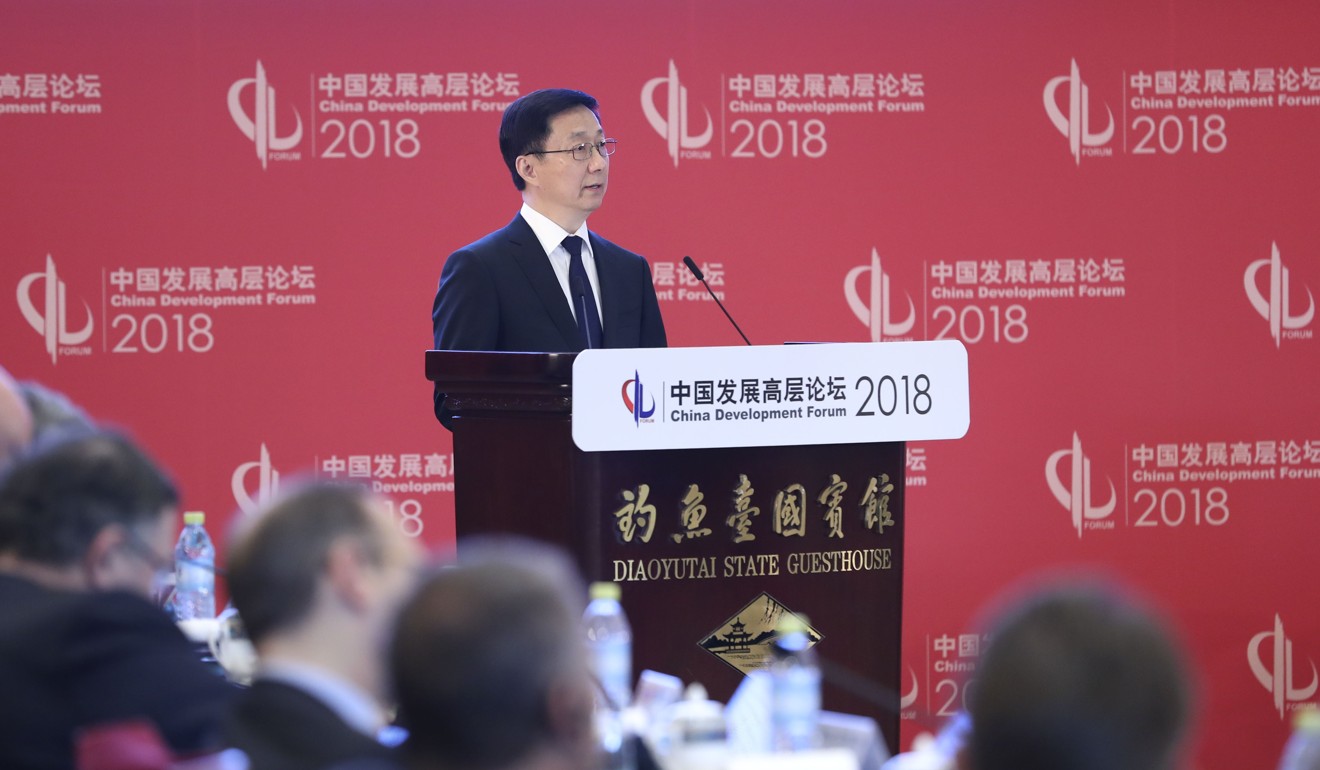
Chinese vice-premier Han Zheng visits Shenzhen to promote Greater Bay Area project
Han tells local leaders to shelve rivalries and focus on supporting economic integration push
The top state leader in charge of China’s ambitious “Greater Bay Area” project visited the hi-tech hub of Shenzhen on Tuesday, reflecting Beijing’s determination to transform Hong Kong, Macau and nine mainland Chinese cities into a financial and innovation powerhouse to rival Silicon Valley.
Vice-Premier Han Zheng was there also to make clear to local leaders they should shelve any intercity rivalries and focus on making the megaproject work, experts said, as Beijing prepared to roll out a blueprint detailing the role each of the 11 cities would play in the economic integration plan.
Han, ranked No 7 in the Communist Party hierarchy, is in charge of China’s regional development and Hong Kong and Macau affairs.
Two sources who spoke to the Post on condition of anonymity confirmed that one of Han’s stops in Shenzhen was Qianhai, an area in the city designated as a testing ground for China’s financial opening and economic cooperation with Hong Kong.

An official at a state company in Qianhai, who asked not to be named, also confirmed that Han had visited Qianhai. The former Shanghai party chief and city’s mayor is expected to visit other bay area cities, including Guangzhou, this week.
Lau Siu-kai, vice-chairman of The Chinese Association of Hong Kong and Macau Studies, a top Beijing-based think tank, said Han’s visit showed how serious the central government in Beijing was about making the Greater Bay Area a success.
“With the central government taking the lead, regional officials need to consider the big picture, and make national interest their top priority,” Lau said.
Hong Kong’s Chong Hing Bank eyes ‘Greater Bay Area’, as China moves to open up banking and insurance sectors
Jonathan Choi Koon-shum, chairman of the Chinese General Chamber of Commerce in Hong Kong, said: “It is good for Han to be visiting Guangzhou and Shenzhen because he is in charge of Hong Kong and Macau affairs, as well as the bay area plan.
“State leaders have also been emphasising synergy: while different cities have their own demands and interests, the bay area needs to integrate to achieve that.”
Jiang Shigong, deputy director of Peking University’s Centre for Hong Kong and Macau Studies, added: “A key goal of Han’s visit is to listen to opinions ... because in the mainland’s policymaking, an official needs to conduct studies before making scientific decisions.”
The 11 economies included in the plan were worth US$1.58 trillion last year, covering an area of more than 56,000 sq km and with an estimated total population of 68 million.
Choi said it was likely the bay area blueprint would be unveiled in mid-June at the earliest, partly because it needed to be revised and finalised by Han and other officials.
Young Hongkongers get set to take on the Greater Bay Area as summer youth scheme kicks off
While different cities have their own demands and interests, the bay area needs to integrate to achieve that
Jiang said he believed the blueprint would pave the way for new measures to underscore Hong Kong’s role as China’s international financial and innovation hub.
Irons Sze Wing-wai, permanent honorary president of the Chinese Manufacturers’ Association, said this would help Hong Kong ramp up its efforts to become a global financial and innovation centre.
For example, Beijing would continue to want to rely on Hong Kong’s well-established financial industry, especially its stock markets, during the reform and opening up of its financial sector.
Earlier this month, Beijing’s top bureaucrat in charge of Hong Kong and Macau affairs called for the integration of both cities with the mainland’s ambitious economic and infrastructure development to be achieved with mutual respect for the two jurisdictions’ own views and circumstances.


